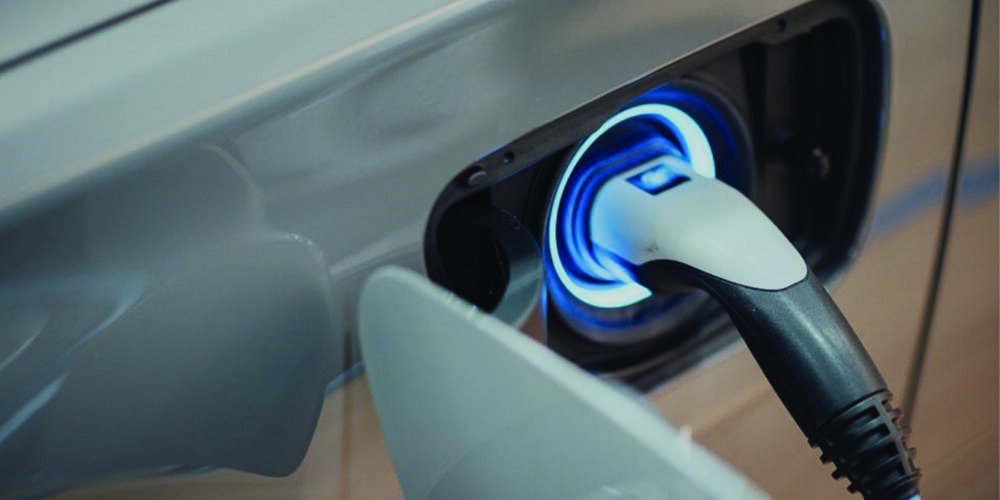Now that we’ve just finished another election year with all of its promises made and promises yet to keep, it’s time for somber reflection about one of the primary forces driving our industry, which is public technical education. While most politicians agree that public education in general is lacking, the question of whether education is lacking money or lacking standards continues to fuel the debate.

This debate is particularly relevant to the automotive parts distribution and service industries because we are becoming more reliant upon the technically-educated employee to make informed decisions on stocking, selling and installing motor vehicle parts. An ignorance of basic electricity, for example, costs our industry millions in wasted warranty parts replacements and lost shop time.
During my years of owning an auto repair shop, I’ve served as an auto technician instructor, a member of a technical curriculum and teaching standards committee, a school board president, and a chair of a trade association education committee. I also spent eight years studying part-time to earn a baccalaureate degree in adult technical education. What I’ve learned is that public general education and technical education in particular isn’t serving our industries as well as they should nor are the automotive parts and service industries supporting public education as well as they should.
LEVELS OF EDUCATION
In 1998, I spent six months writing the engine performance section of an automotive textbook being prepared by a major textbook company. It was an ambitious project and the result was a reasonably well-written textbook. But the project revealed that most people inside and outside our industry drastically underestimate what it takes to educate the modern automotive technician.
To illustrate, the text was to be written at the 8th-grade reading level. Given that most auto repair manuals are written at the 14th-grade or college sophomore level, we discovered that it was difficult, if not wholly impossible to communicate modern automotive technology at the 8th-grade reading level. Simply put, the words were too long and the abstract thought processes too complex to write at the 8th-grade level.
In addition, On-Board Diagnostics II (OBD II) electronics systems had come into being two years before, in 1996. These systems are very complex and require more sophisticated logical and critical thinking processes than did OBD I or non-OBD systems. The fact was that, in 1998, we found it extremely difficult to cram the OBD I technology of that era into a two-volume, 1,500-page text book, let alone the OBD II technology of the current era.
But there’s more. In the late 1990s, on-board vehicle telematics came into existence, which allows a vehicle to receive and transmit wireless communication. Telematics allows vehicles to be located, remotely diagnosed, and remotely controlled, such as unlocking doors at the owner’s request. In short, the vehicle is equipped to participate in all of the functions of the modern Internet plus receive instant technical evaluation and quick service.
In 2004, the Controller Authority Network (CAN) system was introduced, which allowed high-speed, prioritized communications to take place among multiple automotive computers and modules. Currently, an average vehicle has four or five on-board modules designed to control vehicle safety, security, communications, and drive train operating systems. Some high-end luxury vehicles have nearly 80 modules that must instantaneously communicate with each other in various vehicle-operating modes. These systems are now required to operate modern safety systems like vehicle stability controls and radar-based active cruise controls.
With this new technology in mind, we should understand that we’ve added very few, if any, additional instructional hours to our auto technician programs since the demise of pre-electronics era 30 years ago. For that reason, it’s virtually impossible to integrate complex OBD II, telematics, CAN systems, and other modern technology into the current 1,100 clock-hour technical education model. The solution within the current framework is for industry to offer more internship or apprenticeship opportunities for students wishing to work in the parts and service industries.
WHERE TO BEGIN
Modern auto technicians require good reading comprehension, math, science, and computer skills, plus the intellectual curiosity and academic drive needed to master the complex operating systems mentioned above. Consequently, kindergarten through 12th grade (K-12) education provides the best foundation for any type of technical education. For that reason, local parts professionals, jobbers, shop owners, and technicians should take an interest in K-12 education, not only for educating their own children, but for educating future employees.
Unfortunately, current educational models don’t accommodate different learning styles and motivations.
Although I’ve always been an academically oriented student, I’ve also always been a hands-on learner. To illustrate, math has never been my strongest area of study. But give me a hands-on problem like calculating the average speed of a vehicle over the race course and I’ll master the math simply because the learning style and motivation is there to do that. Continuing to hammer square pegs into round holes serves no educational function and it’s time for that to change.
TECHNICAL EDUCATION
I’ll give you my short take on high school technical education by saying that these programs should be changed from the traditional career-bound to an exploratory model. Without exposure to real-world career issues like getting grease in the hair and dirt in the eye, 15-year-old kids find it hard to make good career decisions. Consequently, I think it’s important to provide exploratory technical experiences to high school students via in-house and on-the-job work experience programs.
For those same reasons, college-level programs should focus on career-bound levels because most adult students enroll on that basis. Career-bound students should be taught safety, tool use, operating principles, basic diagnostic and repair procedures in-house. Career-bound students should also be placed in internship programs to learn the detailed hands-on skills needed to make a living in the auto parts and service industries.
With that said, the automotive parts and service industry should, within a model designed by industry itself and offered under the auspices of a trade association, be prepared to introduce these students to the real world of work. Only when industry thus honors its responsibility to education can any true technical education take place in the automotive parts and service sectors.
WORKING WITH EDUCATION
When we, as an industry, propose to work with public education, it’s important to understand how technical education works at the grass roots level. In Colorado, for example, we have some small districts with healthy tax revenue bases that don’t accept state funding. In other areas, we have districts that depend upon state funding for a large part of their revenues and, because of that, perpetually operate on a shoe-string budget. Inequalities in school funding therefore limit the career education options offered to many students.
Most public auto technician programs are also funded by federal money derived from the Carl D. Perkins Career and Technical Education Improvement Act of 2006. Although Perkins money has long funded technical education, the Perkins Act itself has come under criticism the past few years because many in Congress feel that technical education isn’t fulfilling its intended function of providing trained workers for industry. Because so many adult programs are taught as hobby-oriented rather than career-bound activities, this feeling can well be justified in the minds of many legislators and tax payers.
Next, since most auto technician curriculums adhere to National Automotive Technician’s Educational Foundation (NATEF) guidelines, it’s important to understand that NATEF is always a work in progress. Since the NATEF is a part of ASE, its guidelines generally follow the ASE skill and testing categories. So, industry isn’t going to change the structure of technical education as much as it can influence the implementation of these standards.
Last, all auto technician programs are required to maintain an advisory committee to help the school maintain a career-based direction in the program by suggesting changes in curriculum, equipment, and physical plant. Advisory committees are only as strong as their sense of accountability. Becoming involved in an active advisory committees is perhaps the first and best way any jobber, parts professional, repair shop owner, or technician can have a constructive influence on technical education in this age of extreme motor vehicle technology.
Gary Goms is a former educator and shop owner who remains active in the aftermarket service industry. Gary is an ASE-certified Master Automobile Technician (CMAT) and has earned the L1 advanced engine performance certification. He is also a graduate of Colorado State University and belongs to the Automotive Service Association (ASA) and the Society of Automotive Engineers (SAE).













